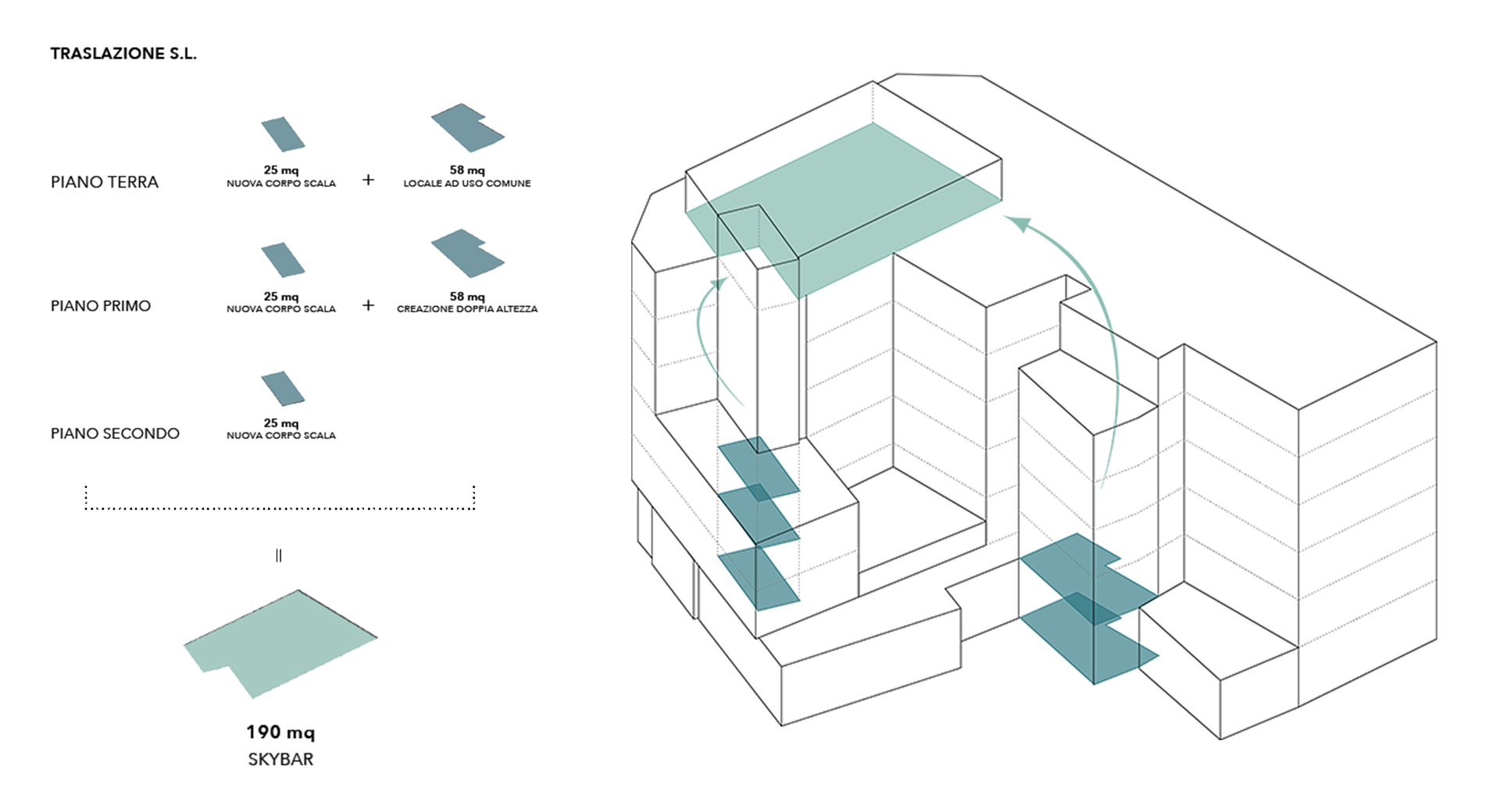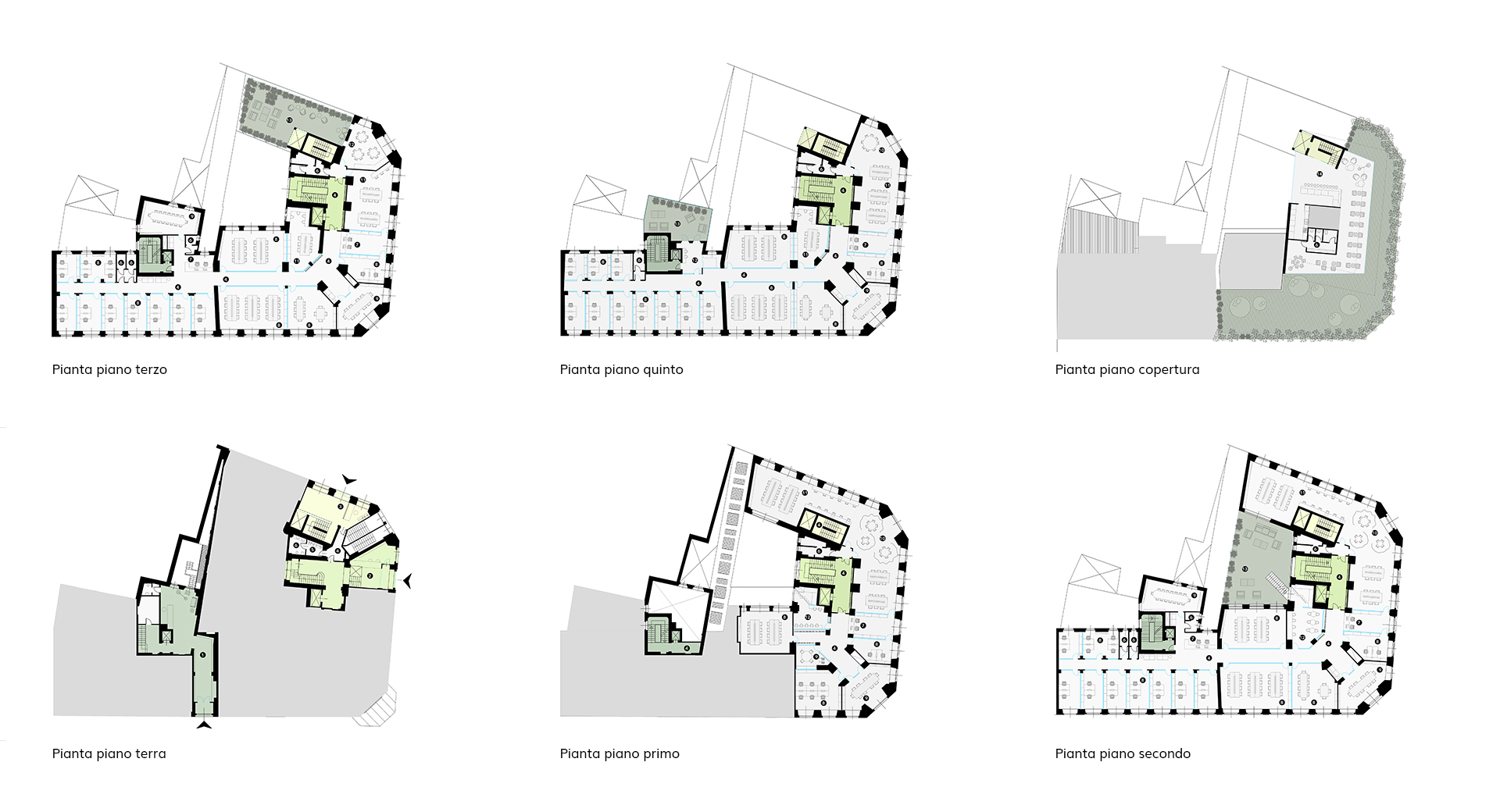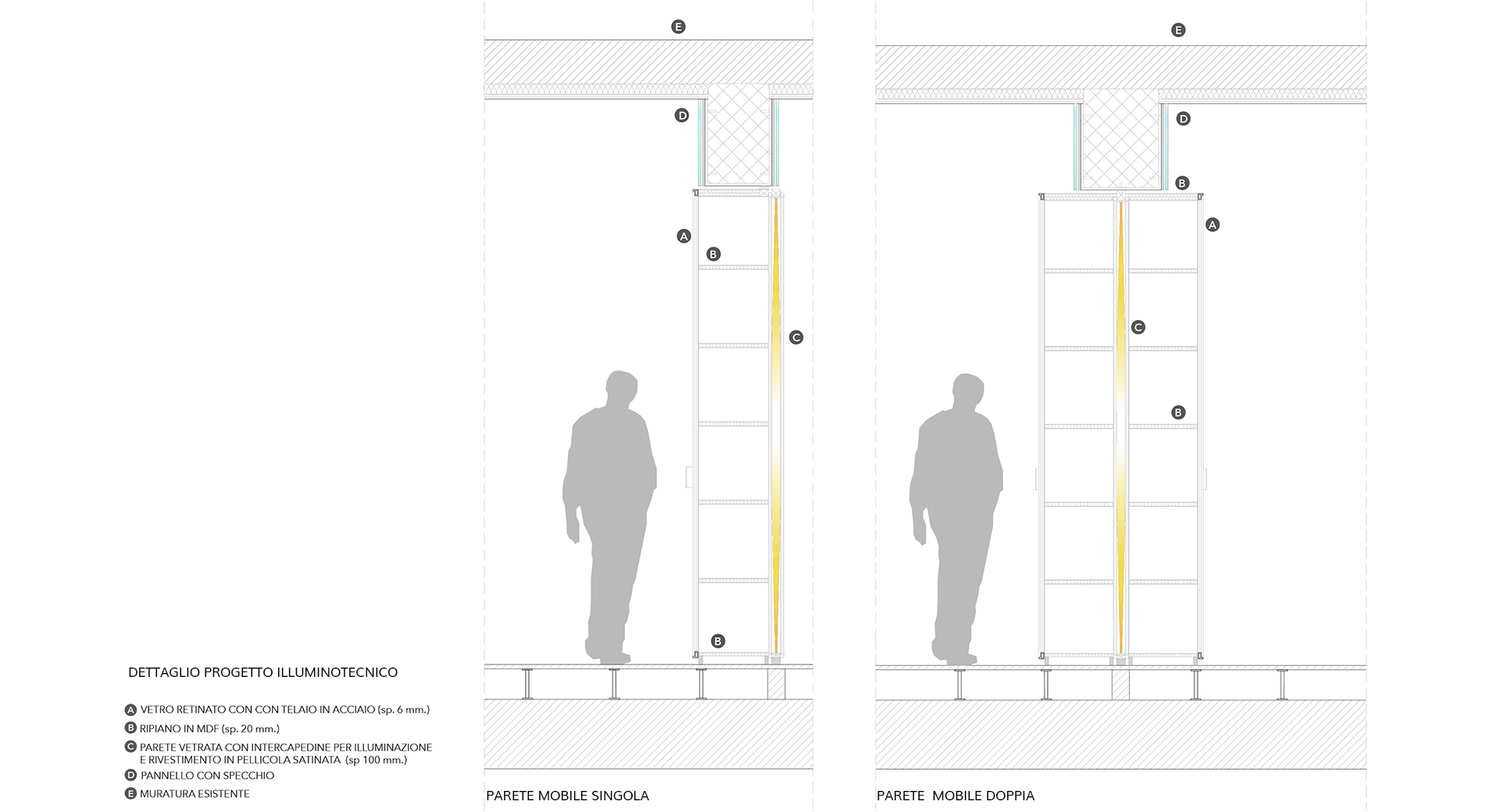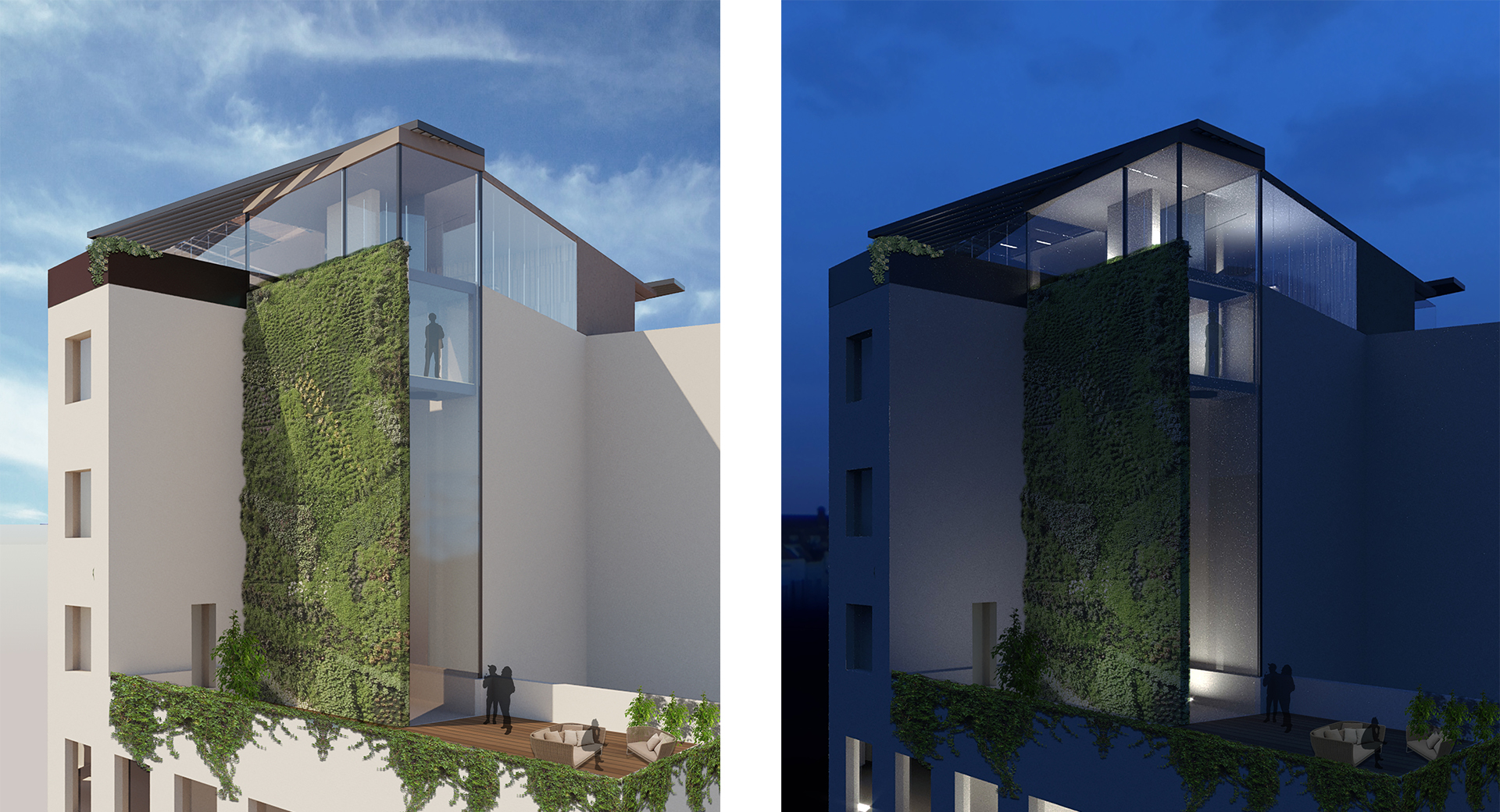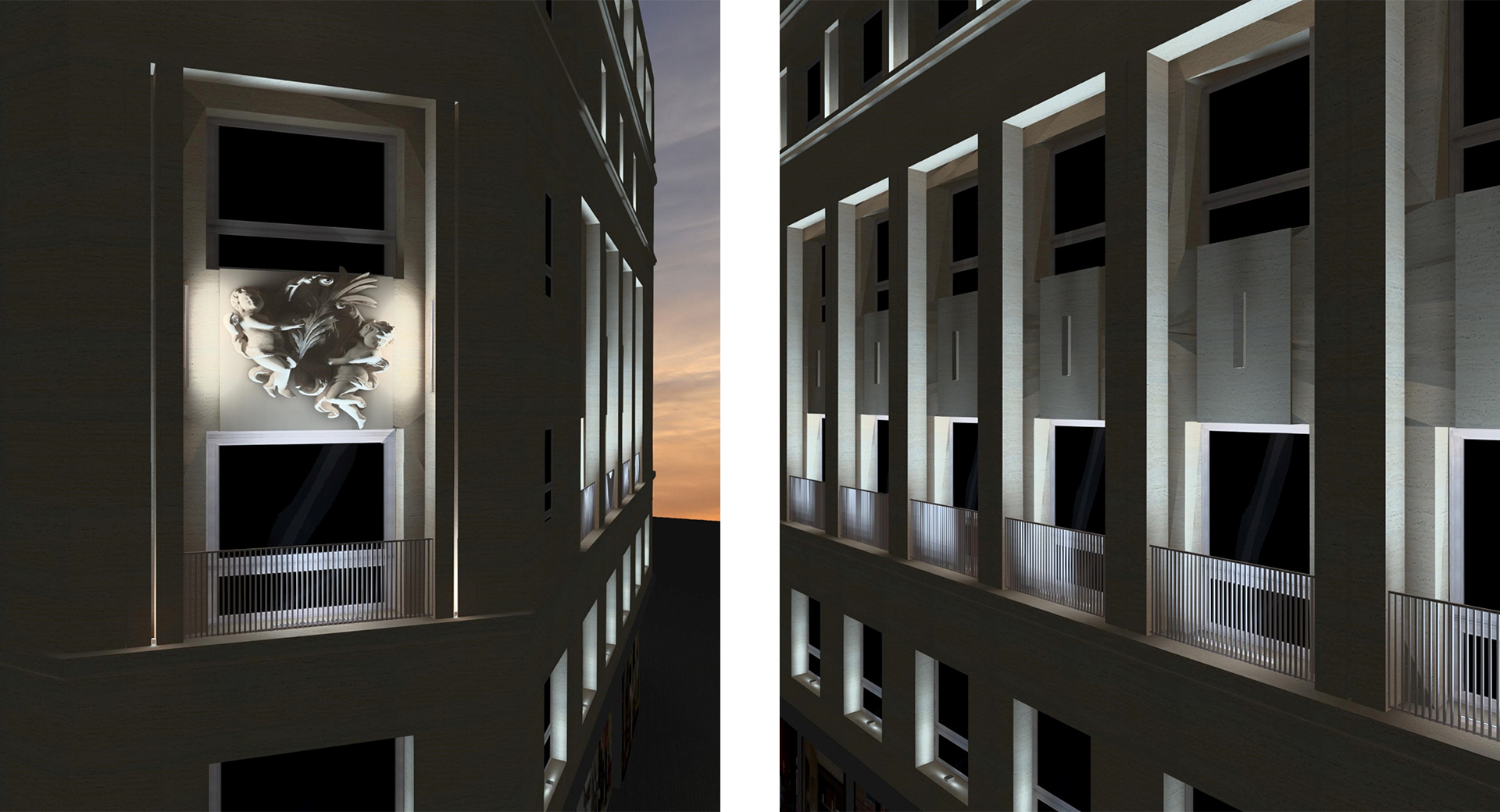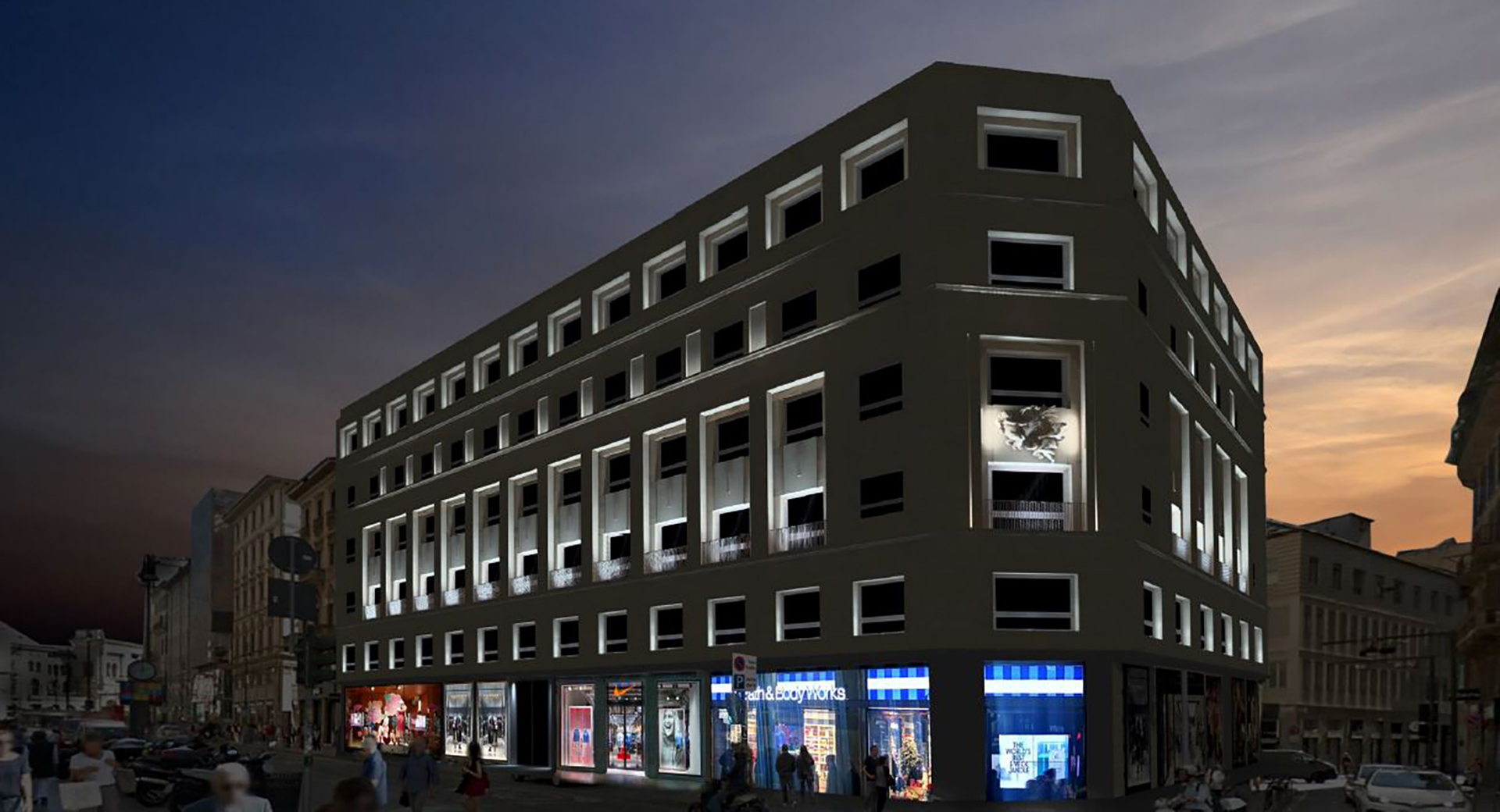Building renovation
Via Torino
Type
Location
Via Torino, Milan
Year
2019
Surface area
4000 m2
Client
Private
Head Designer
Arch. Marco Vigo, Ing. Giorgio Piliego
Professional services
Concept
Via Torino
The property in Via Torino, with regard to the areas subject to intervention, is composed of 2 underground floors where the service and accessory functions are located, the ground floor, where the reception is located, and 5 floors above ground for office use, in addition to the flat roof, accessible via two stairwells, where the air conditioning units and systems are currently located.
Currently the building is divided into two wings separated by a boundary wall, which belong to two different street numbers whose pedestrian entrances are located in Via Torino 21 and Via dell’Unione 1.
In view of the above, the client has commissioned a project to redevelop the building aimed at:
- upgrading the property (also using small portions of the ground floor dedicated to commercial use for limited interventions deemed useful to improve the usability of the accesses);
- optimization of floor efficiency and functional enhancement of external accesses with the aim of creating new reception / connection spaces between the building and the whole block, which can be used by tenants and/or the public;
- introduction of usable outdoor spaces to enrich the livability of the building also through the use of natural elements;
- customization of the communal spaces.
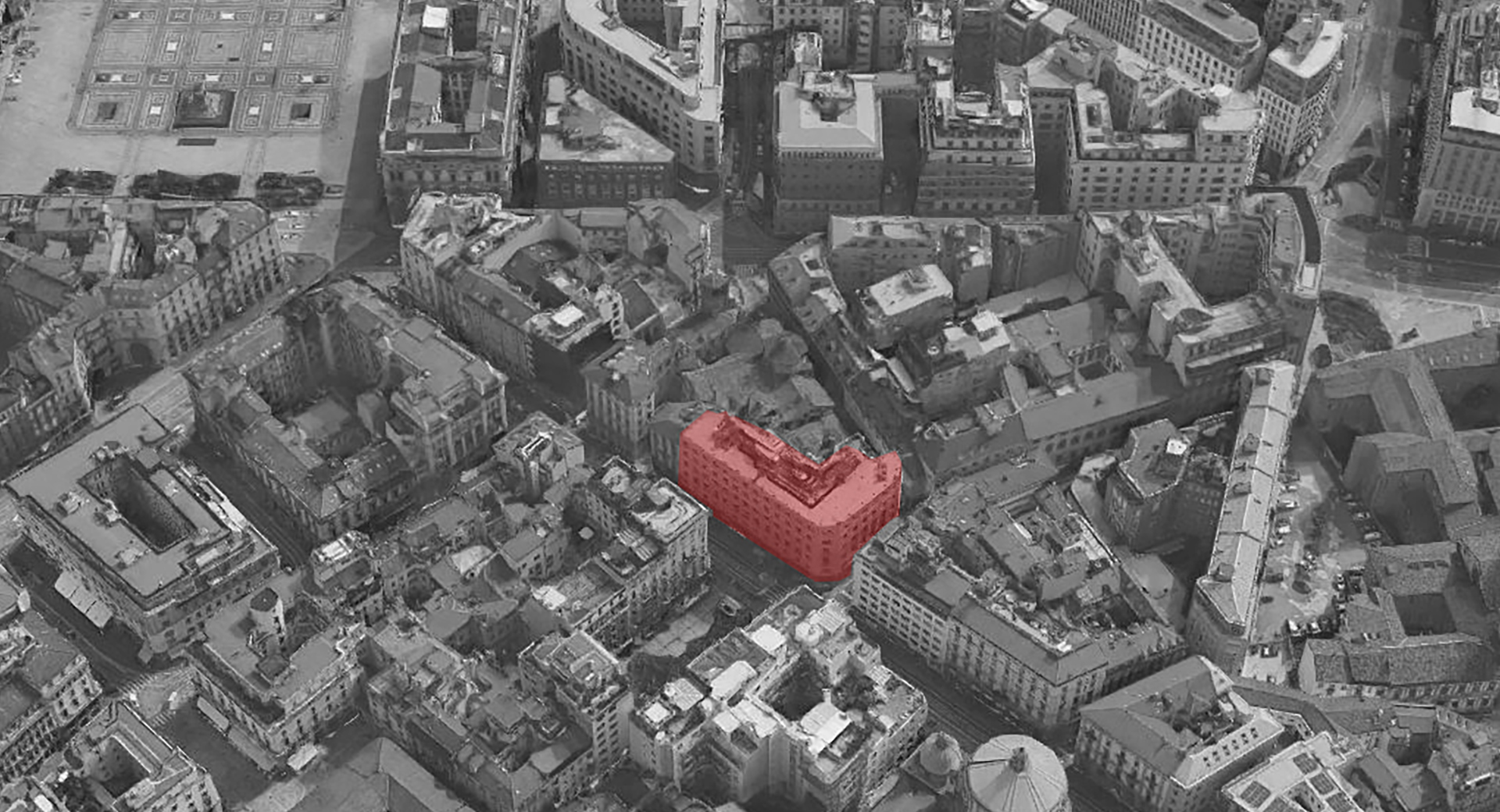
URBAN CONTEXT
The property is located in the Consolidated Urban Fabric (TUC), in the homogeneous area NAF (nuclei of ancient formation) of the Territorial Government Plan (PGT). The types of intervention established in the PGT include: ordinary and extraordinary maintenance, restoration, conservative redevelopment, renovation and new construction.
It has been verified with the Superintendence of Archaeology, Fine Arts and Landscape for the metropolitan city of Milan that there are no protection measures that require prior approval of the functional area of architectural heritage and landscape for any intervention, despite the proximity to the church of Santa Maria presso San Satiro.
However, the property is located in an area of high archaeological risk; in accordance with Art 66 of the Building Regulation, any construction projects involving interference with the soil in areas not subject to restrictions under Legislative Decree No. 42 of 22 January 2004 but included in zones A and B of the Archaeological Risk Map of Milan, drawn up by the Archaeological Superintendence of Lombardy, must be submitted for prior notification to the relevant Superintendence.All works and interventions must slavishly respect the indications and any measures dictated by the Archaeological Superintendence in order to avoid damaging the archaeological heritage.
Project objectives
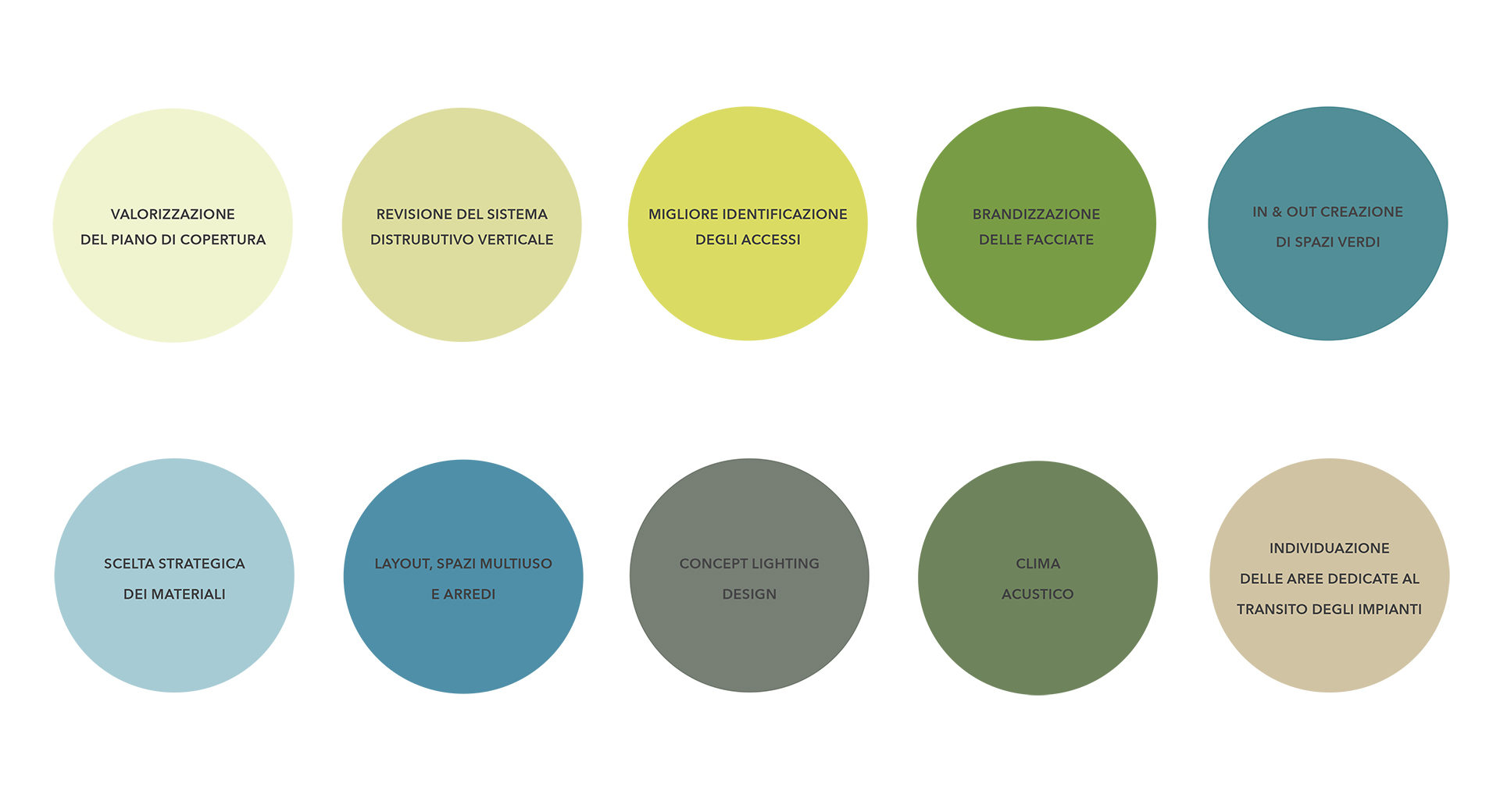
REVIEW OF THE VERTICAL DISTRIBUTION SYSTEM
Considering that the building is composed of two wings that are currently not communicating, the opportunity to maintain the current division of space into vertical blocks is envisaged, as well as the possibility to divide the spaces into wider horizontal planes (as mainly requested, according to market surveys).
To this end, the reception areas are redefined as follows:
- building entrance facing Via Torino;
- building entrance facing Via dell’Unione;
- building entrance facing Via Falcone.
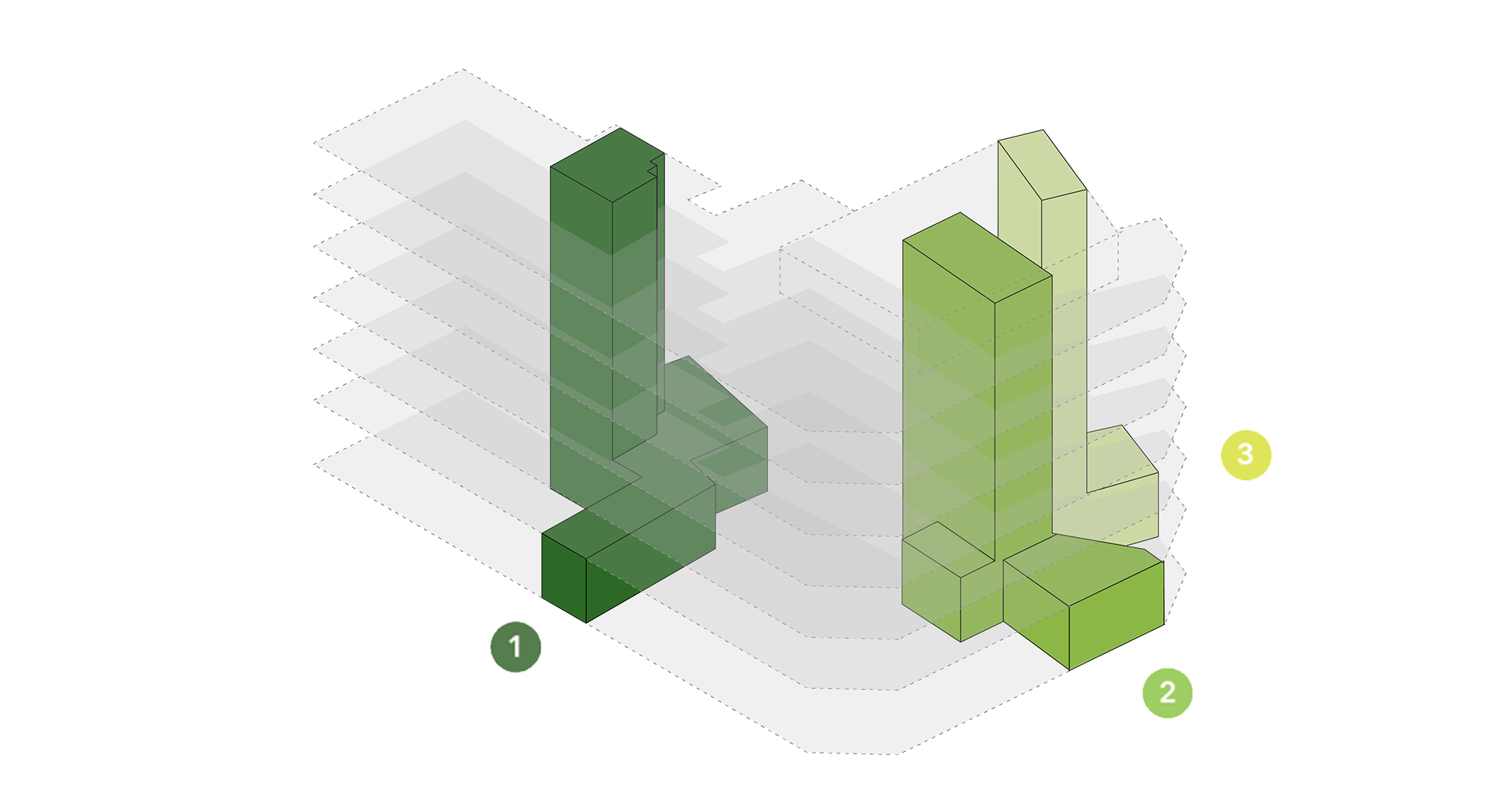
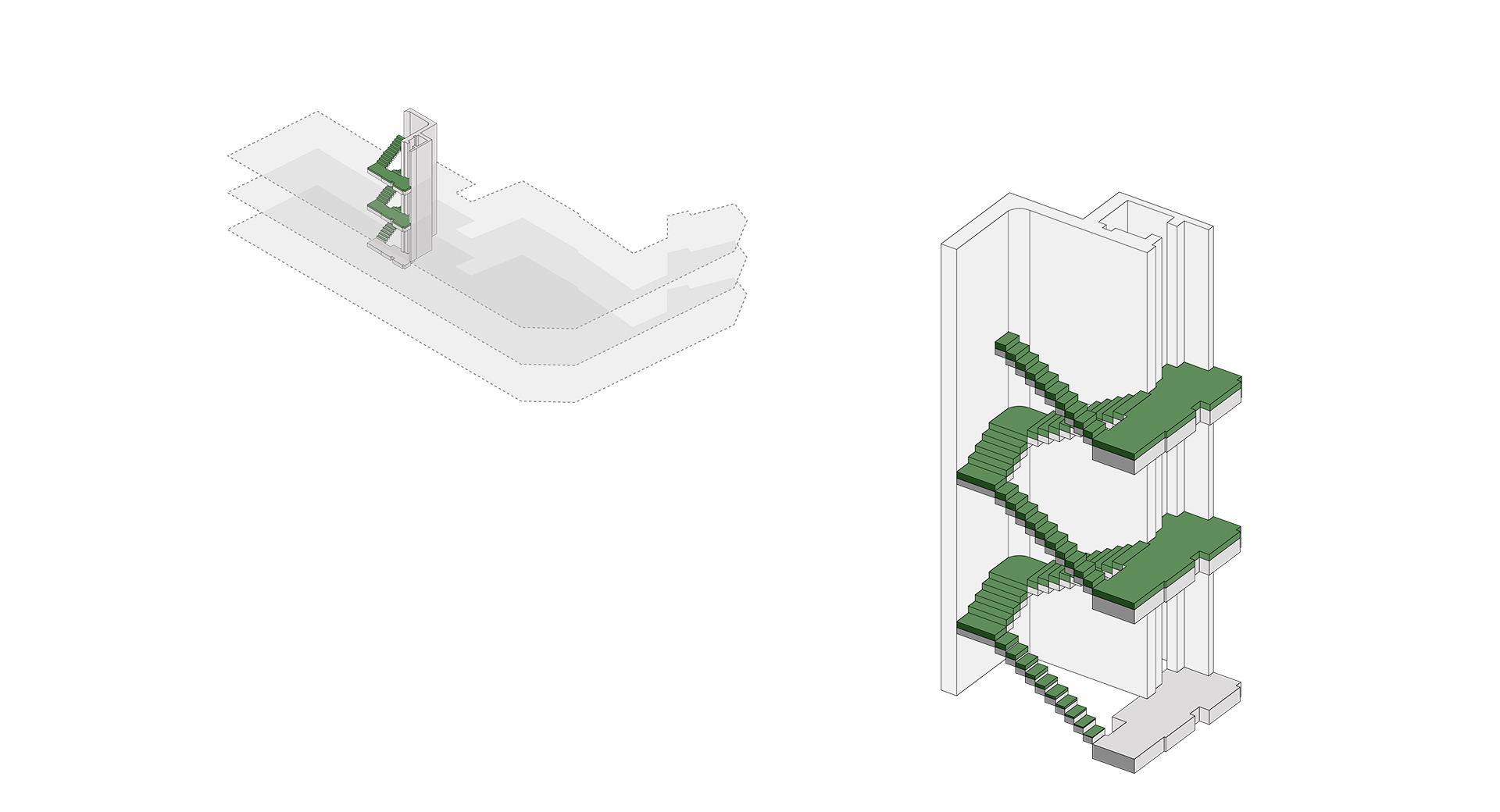
ADAPTATION OF STAIR LANDINGS
Entrance body of the building overlooking Via Torino;
Adaptation of the stair landings for the laying of the floating floor.
TYPE 1:
Backfilling existing ramps with cement mortar and new stone cladding, including landings. Adaptation of the parapet.
ADAPTATION OF STAIR LANDINGS
Building entrance facing Via dell’Unione;
Adaptation of the stair landings for the laying of the floating floor.
TYPE 2:
Lightweight concrete backfill of landing only.
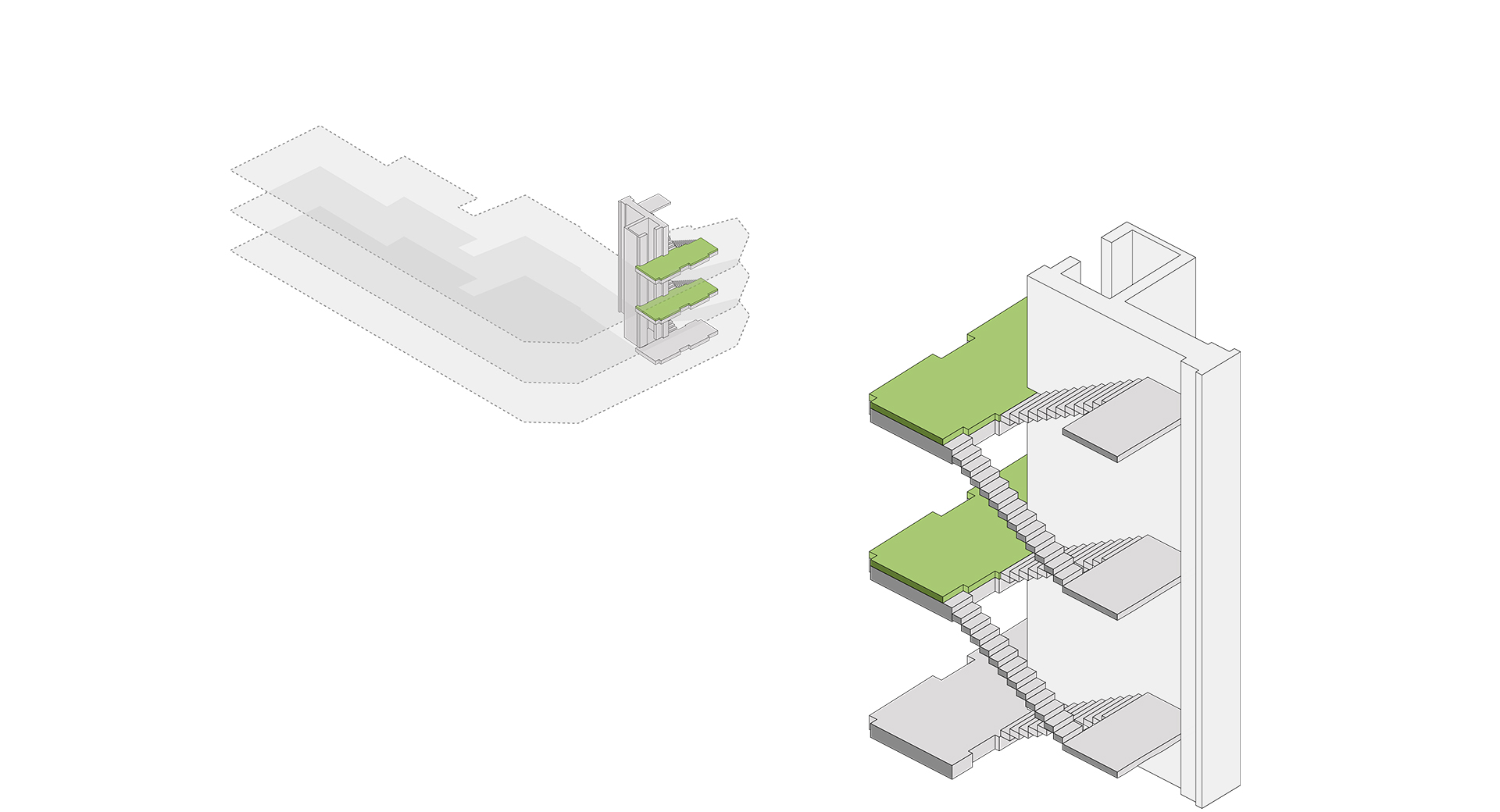
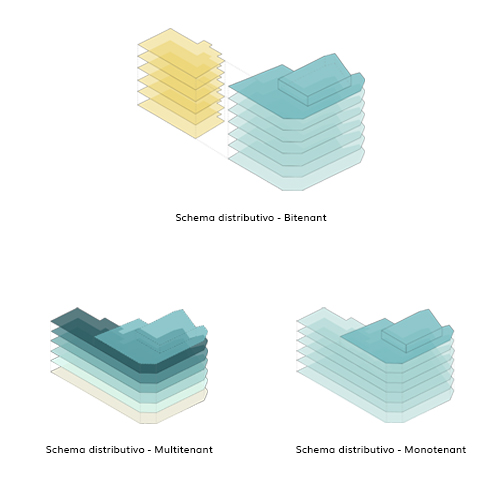
REVIEW OF THE HORIZONTAL DISTRIBUTION SYSTEM
Review of the horizontal distribution system with multiple possibilities on how to split up the building:
- MONO-TENANT
- BI-TENANT
- MULTI-TENANT
IN & OUT: INTRODUCTION OF USABLE OUTDOOR SPACES
To improve the connections between the indoor and outdoor spaces, where possible, areas for recreational use are established near the terraces, so that the best possible use can be made of outdoor spaces.
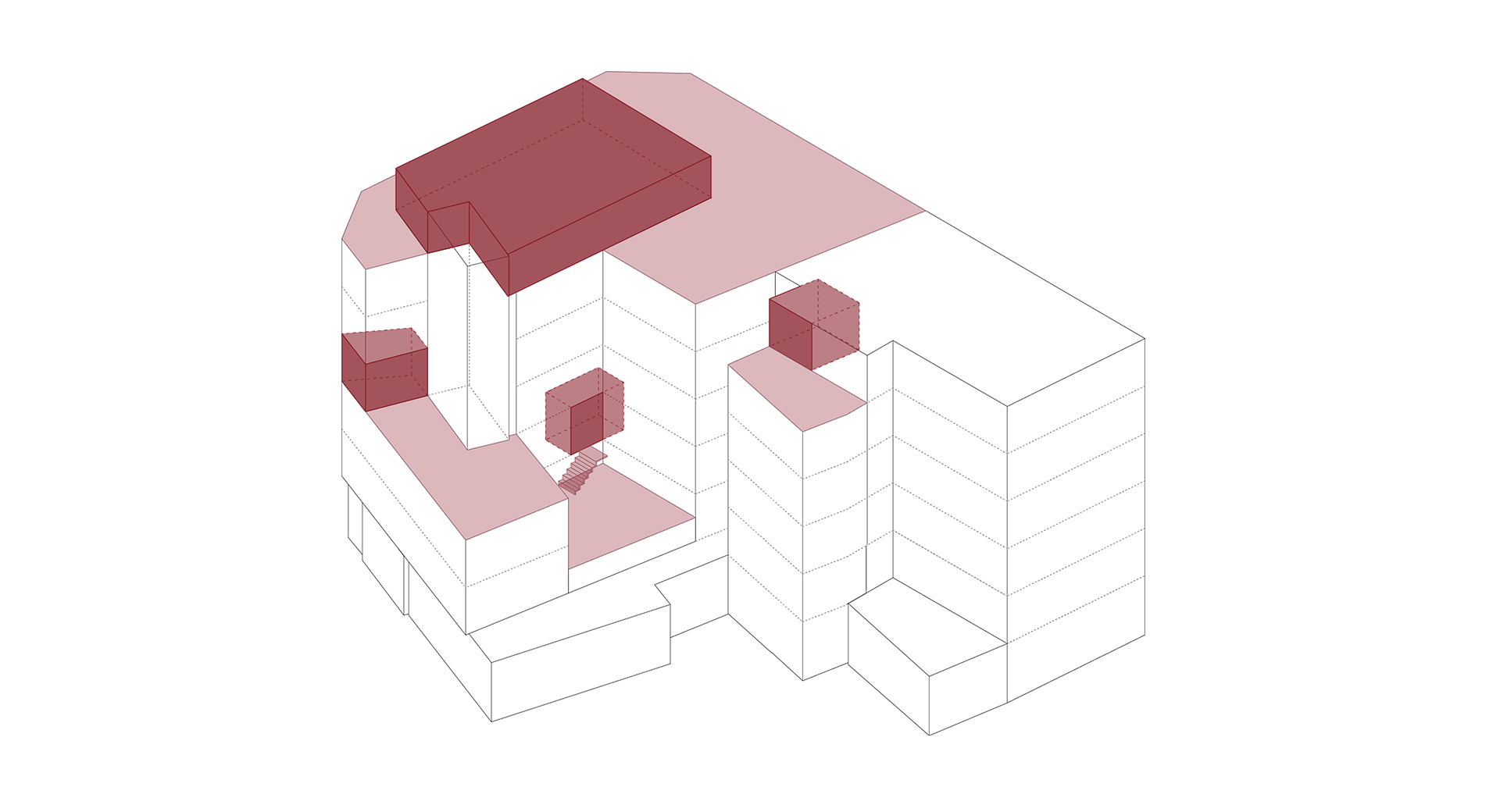
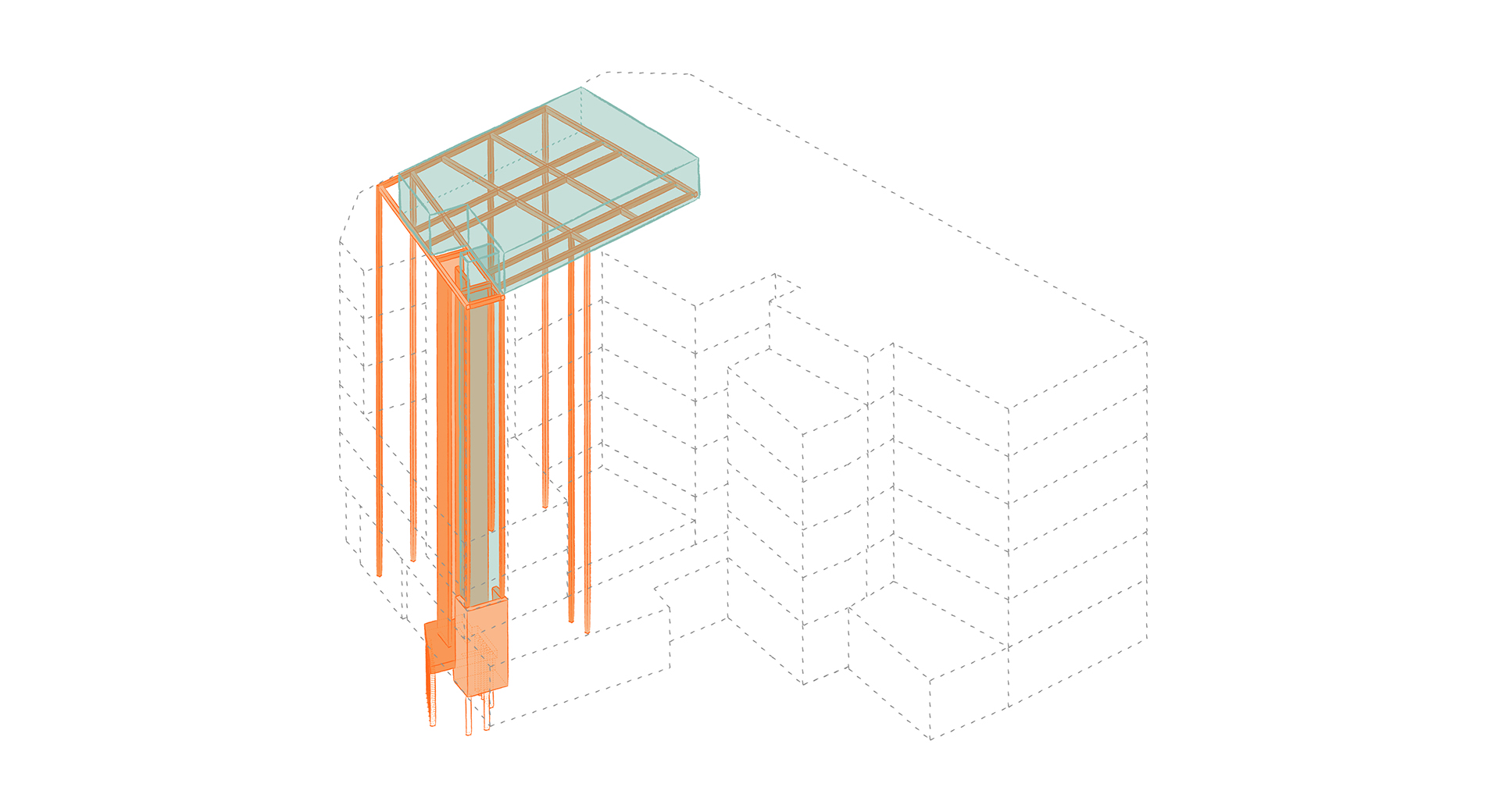
STRUCTURAL CONTEXT
The new volume placed at the extrados of the existing roof has been conceived as a floating object on the building itself with a new dedicated vertical connection that is independent from the main building at a structural level.
This structural tower containing the stairwell and elevator will have as its base a reinforced concrete slab of about 70 cm thick on the floor at ground level, and this slab will be connected to the existing ground through micropiles with a diameter of about 20 cm that will provide a foundation to the structure while maintaining, during construction, the use function of the existing basement access stairs placed below the new reinforced concrete slab that serve the commercial premises and their storerooms located on the -2 floor.
UPGRADING OF THE PROPERTY
The upgrading of the property occurs through the creation of a rooftop sky bar and terrace open to the public, with independent access (entrance 3), so that it can be used by different users as well as in the evening. This is why, also in relation to the requirements of the fire brigade, a staircase/panoramic lift is created to serve the sky bar and terrace exclusively.
The volume required for the creation of the sky bar is taken (in areas) from the floors below (ground floor, first floor, second floor).
